The Garrison’s Old Ranges
The Experimental Casement
The
Experimental
Casement
was
built
in
1872-3
it
was
used
by
the
British
School
of
Gunnery
and
was
later
adapted
into
the
Light
Quick
Firing
Battery
in
1893,
further
modifications saw it serve during the Second World War.
The
casement
is
of
brick
and
concrete
construction,
two
cannons
were
originally
housed
in
the
structure;
this
was
reduced
to
one
during
the
Second
World
War
with
a
range
finders
position
being
allocated
to
the
left
hand
side
of
the
building,
all
the
original
mountings
for
the early cannons were left in-situ.
The
right
hand-side
housed
an
anti
shipping
gun,
two
large
steel
shutters
would
open
to
permit
the
gun
to
be
wheeled
forward
into
the
firing
position.
The
range
finder
would
then
direct the firing operation.
Until
recently
the
Experimental
Casement
was
open
to
the
public,
however,
in
an
effort
to
help
preserve
the
structure
and
to
stop
vandalism,
steel
shutters
have
been
placed
over
the
access points.
The Viking Rampart
The
oldest
military
installation
on
the
site
is
this
Viking
Rampart
from
AD894
it
is
a
Scheduled
Ancient
Monument,
behind
are
the
two Powder Magazines from 1852 the first brick built buildings on the site.
One
of
the
two
powder
magazines
that
survive
on
the
site
built
in
1852
is
still
in
incredibly
good
condition.
The
embankment
just
in
shot to the left is a blast wall protecting the nearby accommodation.
Southend-on-Sea
The Heavy Quick Fire Battery
Without
doubt
one
of
the
most
impressive
relics
of
the
old
ranges
is
the
Heavy
Quick
Firing
Battery
of
1898
this
was
also
adapted
from
a
much
smaller
previous
structure,
the
remains
of
which
are
just
visible
as
a
dark
stain
on
the
ground
at
one
end
of
the
structure.
There
are
four
firing
positions
on
top
of
the
structure
these
were
used
for
anti-shipping
guns and used in conjunction with the nearby searchlight positions.
To
the
right
we
can
see
the
elegant
front
face
of
the
QF
Battery
each
crescent
is
a
firing
position.
A
shell
lift
was
used
to
raise
the
shells
from
the
storage
area
below
to
the
firing
positions
on
the
roof,
the
shell
would
be
placed
on
the
fold
down
holder
and
then
winched
to
the
top
by
an
electric
motor,
the
two
shell
lifts
survive.
The
shells
would
be
laid
in
the
lift
tray
in
the
"down"
position.
Once
the
shell
was
placed,
the
tray
would
be
moved
into
the
"up"
position,
then
it
would
then
be
winched
to
the
upper
level
by
a
chain
operated
from
a
control
panel
set
further
back
in
the
building,
sadly
the
control
panel
was
destroyed
in
an
arson attack in 2007.
No:2 Coastal Artillery Searchlight Emplacement
The
Coastal
Artillery
Searchlight
Emplacement
housed
a
90cm
Coastal
Search
Light
with
a
90/42
MK
V
Projector.
The
search
light
was
used
to
scan
the
estuary
at
night
and
if
need
be
light
up
any
enemy
craft
that
ventured
too
close.
The
geology
of
the
shore
is
flat,
but
there
are
a
number
of
sand
banks
and
it
was
hoped
that
any
raiding
craft
would
get
beached
and
become
sitting
ducks
for
the
defenders to fire at.
The
tower
was
modified
after
the
war,
this
saw
the
cutting
out
and
re-rendering
of
the
wall
that
held
the
lower
rail
of
the
steel
shutter
doors.
Gunpits
Little
is
known
about
the
"Gunpits,"
it
is
thought
they
were
used
for
the
testing
of
rifled
cannons
and
guns,
there
were
originally
four
of
these,
concrete
walled
pits
left
open,
however, in 2009 they were filled with soil and grassed over.
6inch hold fast
Remains
of
the
6”
gun
hold-fast,
the
gun
was
housed
in
a
pillbox
that
was
demolished
soon
after
the
end
of
the
Second
World
War,
up
until
the
new
seawall
was
re-built
a
cannon was embedded in the original, it was encased within the new seawall.
Ground Level FW3/24 rectangular pillbox
This
was
originally
flush
with
the
level
of
the
grass,
it
has
a
single
entrance
on
the
land
side
with
three
firing
loops
on
the
side
overlooking
the
Thames
Estuary.
The
main
armament
came
from
a
Vickers
Machine
Gun,
firing
loops
were
also
located
in
the
back
wall for small arms fire over the fields.
Gogs Berth
Two
barges
were
operated
from
Gogs
Berth
these
were
the
“Gog”
and
“Magog”.
One
of
the
jobs
the
barges
and
berth
were
tasked
with
was to carry the 21 ton Woolwich Infant Cannons down the Thames from Woolwich Arsenal for testing at Shoebury.
Barge Pier
Originally named “Garrison Pier,” little information exists on what the pier was used for.
The
Barge
Pier
has
a
length
of
around
380ft,the
pier
head
is
84ft
wide
tapering
out
to
a
maximum
width
of
98ft
this
then
reduces
over
a
length
of
102ft
to
a
27ft
wide
neck
of
about
278ft
in
length.
The
pier
was
served
by
a
dual
5ft
gauge
railway.
It
is
rumoured
that
parts of Britain’s first atomic bomb were landed here for testing.
PLEASE NOTE:
These
sites
are
former
LIVE
weapons
testing
and
proving
grounds
including
the
beach,
and
is
still
owned
by
the
Ministry
of
Defence,
therefore take heed of all notices posted around the site.
DISCLAIMER:
Southend
Timeline
does
not
promote
the
visiting
these
sites,
it
is
recommended
that
you
stick
to
the
dedicated
paths
and
not
deviate
from them.
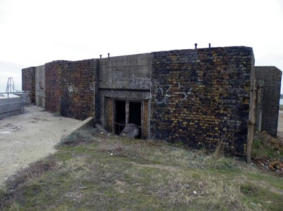
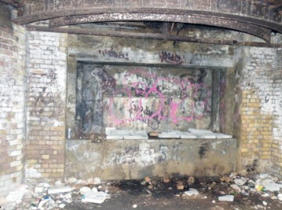
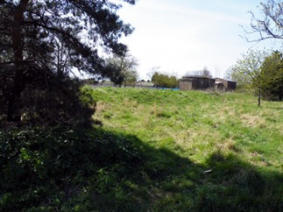
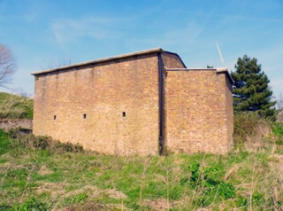
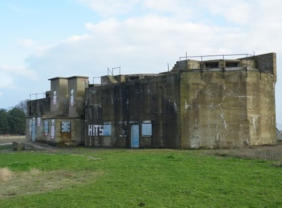
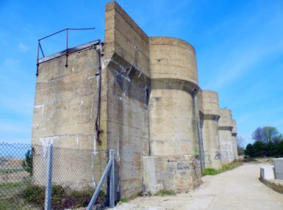
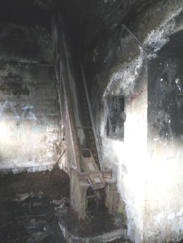
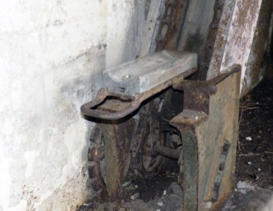
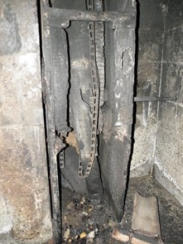
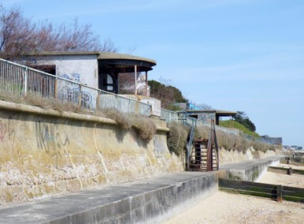
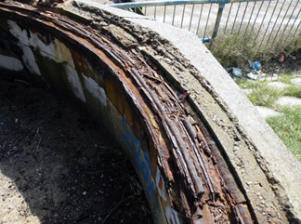
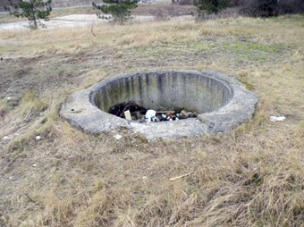
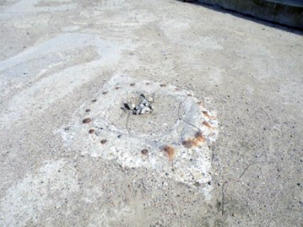
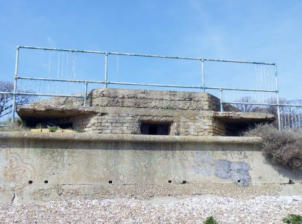
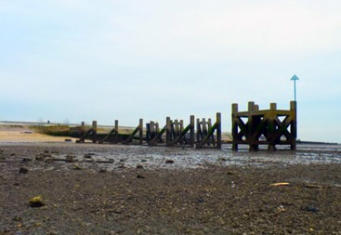
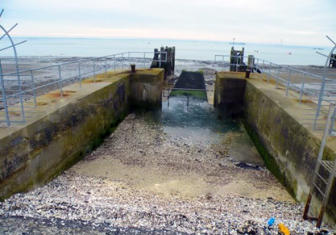
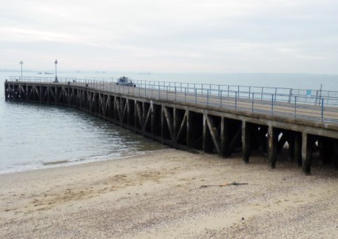
Burnt out Control Panel
Rear View
Lift in the down position
Lift in the up position
There
are
many
of
the
original
buildings
still
standing
within
the
old
ranges,
these
include
the
old
hospital
which
is
now
a
house.
The
gunnery
drill
shed
was
restored
and
converted
for
commercial
use.
Originally
there
were
as
many
as
fifty
Air
Raid
Shelters
built
within the Garrison/old Ranges, today it is thought just nine survive.

Southend Timeline Southend-on-Sea © 2009 - 2024. All Rights Reserved



SOUTHEND CITY

Southend-on-Sea’s No 1 History Website! Documenting The Town & The Townspeople
Now Incorporating The Sea Of Change Website
Website Info:


Chalkwell ▪ Eastwood ▪ Leigh-on-Sea ▪ Prittlewell ▪ Shoeburyness ▪ Southchurch ▪ Thorpe Bay ▪ Westcliff-on-Sea
































































